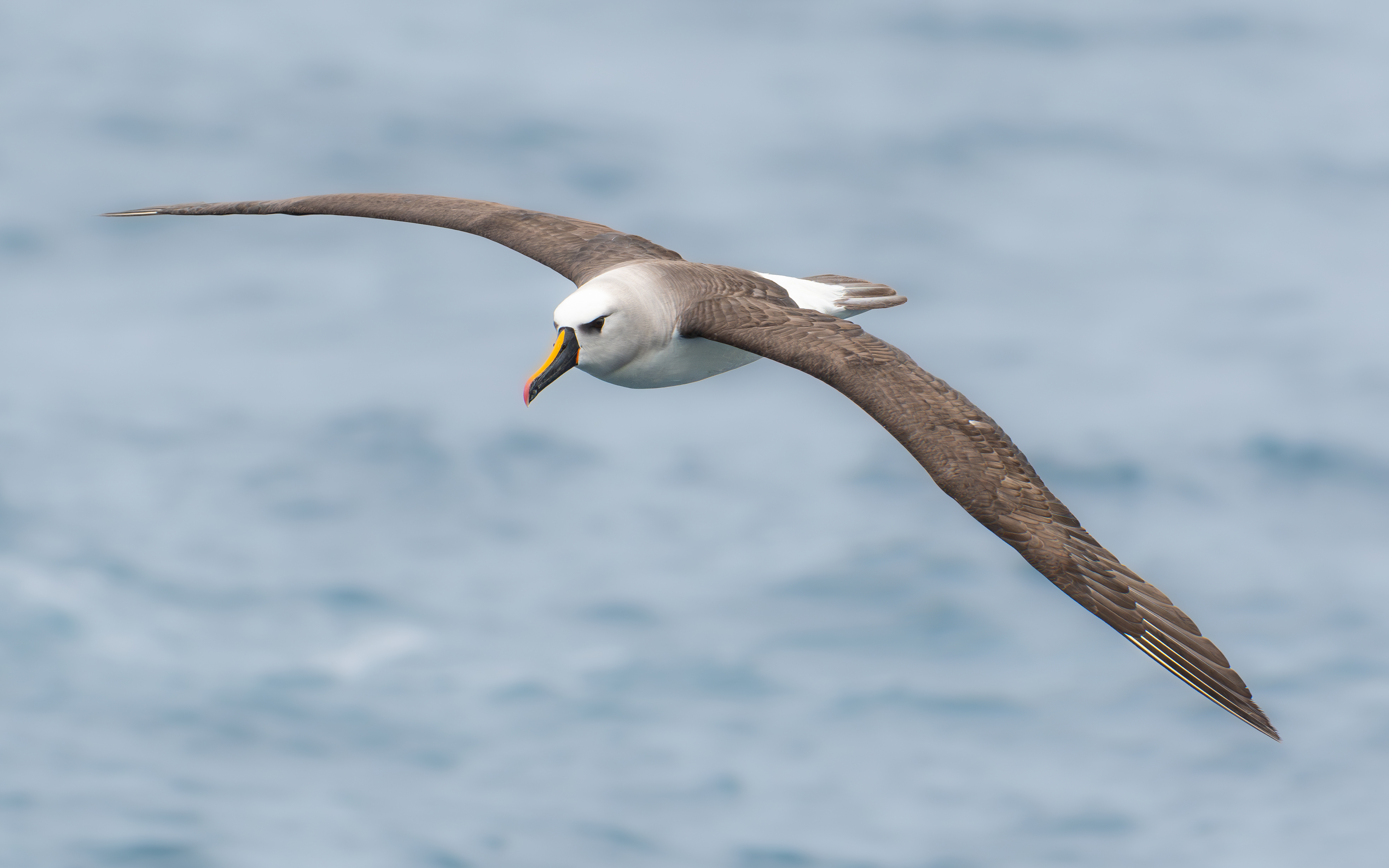 An Atlantic Yellow-nosed Albatross in waters off Tristan Da Cunha; photograph by Ross Wheeler
An Atlantic Yellow-nosed Albatross in waters off Tristan Da Cunha; photograph by Ross Wheeler
Melinda G. Connors (School of Marine and Atmospheric Sciences, Stony Brook University, USA) and colleagues have published in the Journal of Experimental Biology on the energy costs of dynamic soaring on albatrosses.
The paper’s abstract follows:
“Estimates of movement costs are essential for understanding energetic and life-history trade-offs. Although overall dynamic body acceleration (ODBA) derived from accelerometer data is widely used as a proxy for energy expenditure (EE) in free-ranging animals, its utility has not been tested in species that predominately use body rotations or exploit environmental energy for movement. We tested a suite of sensor-derived movement metrics as proxies for EE in two species of albatrosses, which routinely use dynamic soaring to extract energy from the wind to reduce movement costs. Birds were fitted with a combined heart-rate, accelerometer, magnetometer and GPS logger, and relationships between movement metrics and heart rate-derived V̇O2, an indirect measure of EE, were analyzed during different flight and activity modes. When birds were exclusively soaring, a metric derived from angular velocity on the yaw axis provided a useful proxy of EE. Thus, body rotations involved in dynamic soaring have clear energetic costs, albeit considerably lower than those of the muscle contractions required for flapping flight. We found that ODBA was not a useful proxy for EE in albatrosses when birds were exclusively soaring. As albatrosses spend much of their foraging trips soaring, ODBA alone was a poor predictor of EE in albatrosses. Despite the lower percentage of time flapping, the number of flaps was a useful metric when comparing EE across foraging trips. Our findings highlight that alternative metrics, beyond ODBA, may be required to estimate energy expenditure from inertial sensors in animals whose movements involve extensive body rotations.”
Reference:
Conners, M.G., Green, J.A., Phillips., R.A., Orben, R.A., Cui, C., Djurić, P.M., Heywood, E., Vyssotski, A.L. & Thorne, L.H. 2024. Dynamic soaring decouples dynamic body acceleration and energetics in albatrosses. J. Exp. Biol. 227 (18): jeb247431. doi: https://doi.org/10.1242/jeb.247431
16 October 2024

 English
English  Français
Français  Español
Español